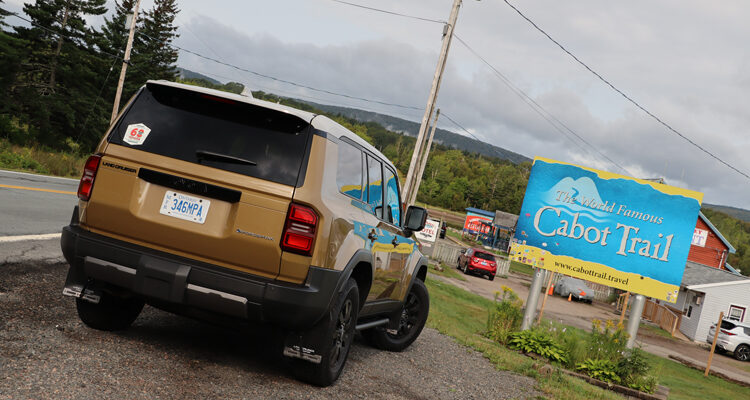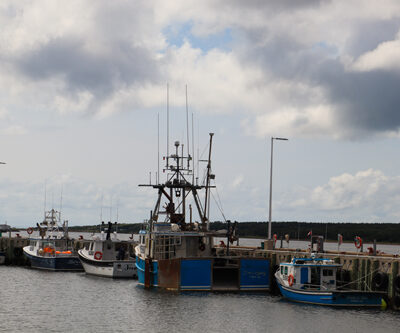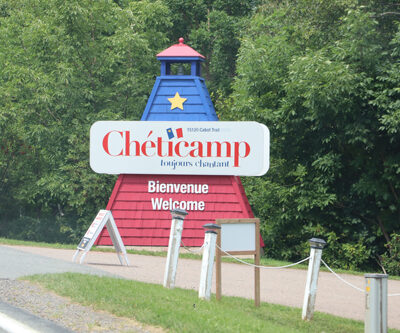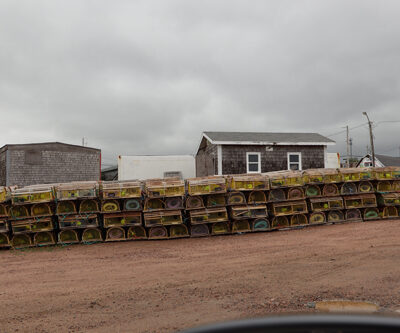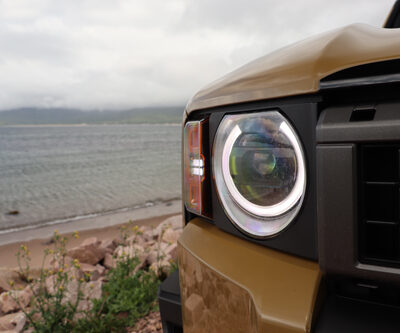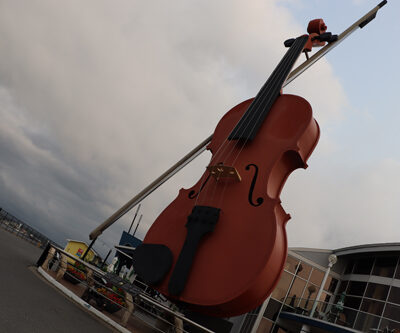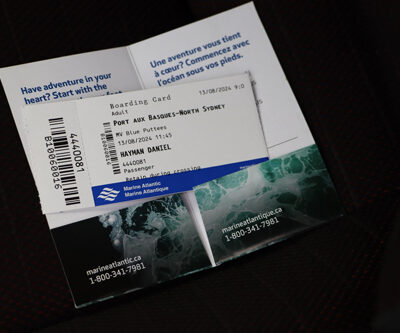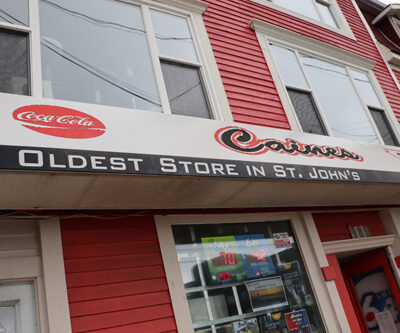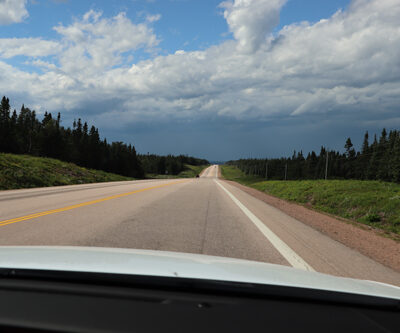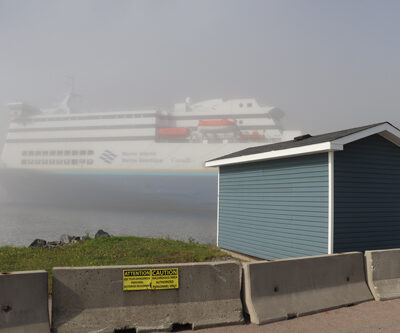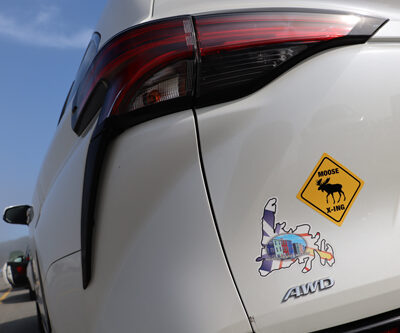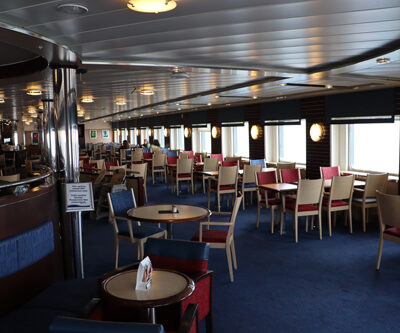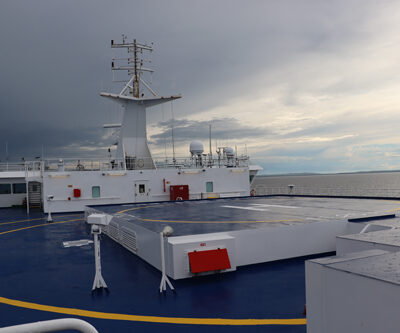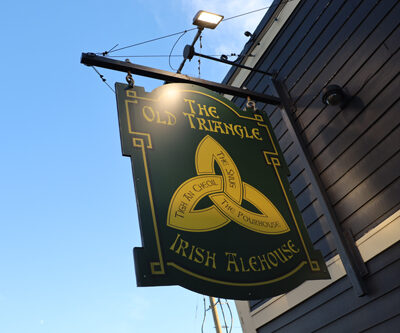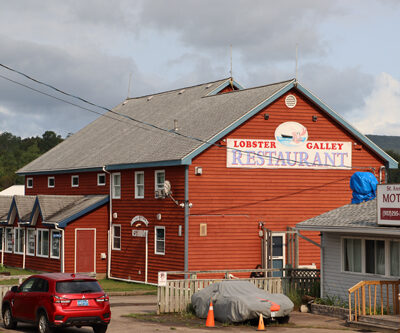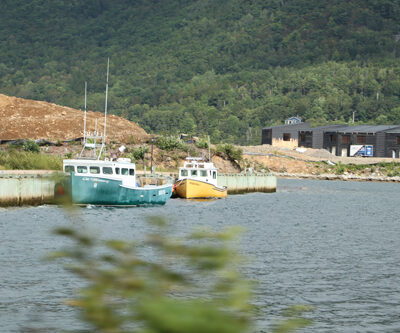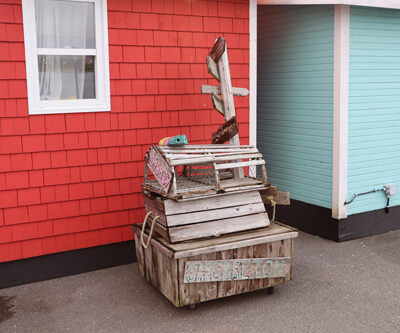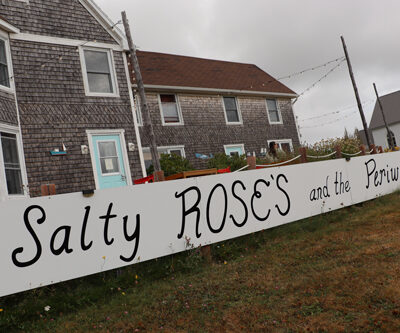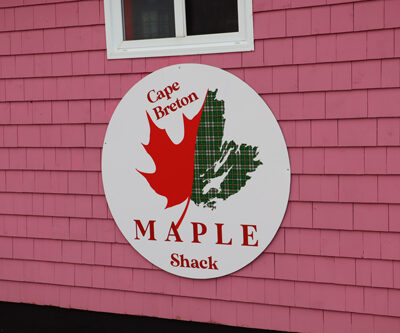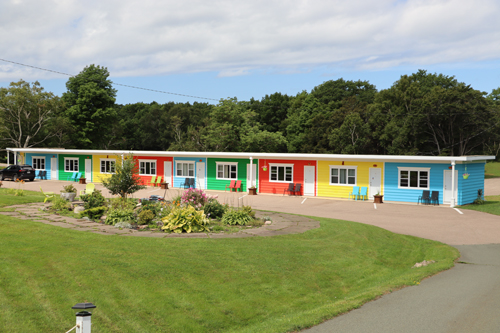
Today, Toyota Motor Company is one of the most well-known auto manufacturers in the world – actually, that’s probably selling them short. They are one of the most well-known companies in the world; in addition to being the highest-selling car manufacturer the world over with markets in 180 countries (no one else can make that claim – not Volkswagen, not Mercedes-Benz, not Ford – no one), they build light trucks through their Hino brand, trains, ran a Formula 1 team in the past and runs a NASCAR effort today and on it goes. They manufacture vehicles the world over, including here in Canada where they build some of their most popular models such as the RAV4 crossover and Lexus RX luxury SUV.
For all that success, however, Toyota’s efforts in North America are relatively new. The first plant was opened in 1968 – not in the US, not in Mexico but in Canada, of all places, in a little coastal town in Nova Scotia called Sydney.
This year, Toyota is celebrating its 60th anniversary in Canada and as a celebration, a group of Canadian journalists and content creators are driving a selection of Toyota models across Canada from KM 0 of the Trans-Canada highway in St. John’s, NL to Mile 0 in Victoria, BC. Along the way, they will be visiting sights important to the brand – and the local economies it influenced – all across our home and native land.

A quick side note: in Japanese culture, a person’s 60th birthday is known as “Kanreki” and it’s an important one as that denotes a person has been through the zodiac cycle five times, and in some ways, this can be seen as a rebirth of sorts. While Toyota has steadily been growing since its inception, with the advent of electrification, a rebirth for it and many other manufacturers is definitely in the cards.
We started our portion of the drive at said KM 0, but we’re starting our story a drive and ferry ride away from Toyota North America’s birthplace in Sydney.

From Claritone to Cars
The year was 1968. The ink on the North American Auto Pact was still wet and Toyota – which wanted to sell cars in Canada and the US — had to move quickly. If they wanted to avoid the tariffs that were part of the pact, then they would have to start building cars on North American soil. That would protect them from tariffs on the cars they built in Sydney as well as any vehicles they wanted to import from Japan. After all at the time, the Sydney plant – erected in an industrial complex alongside a Claritone factory that built home audio systems and transistor radios – was only producing two models in small quantities. Those models? The Corolla and the Isuzu Bellett, a vehicle that, at the time, was considered somewhat of an attractive curiosity to the new market. Why Isuzu? Well, the same investment and shipping company that put up some of the dough for this op – Mitsui of Japan – saw some promise in that brand as well. We all know where that ended up, but those with fond memories of the Land Cruiser-esque Trooper and Pathfinder-esque Rodeo will see that the brand did give its all, even though it ended up being all for naught.
And just like that, Toyota North America was born – back to St. John’s.
A drive through time
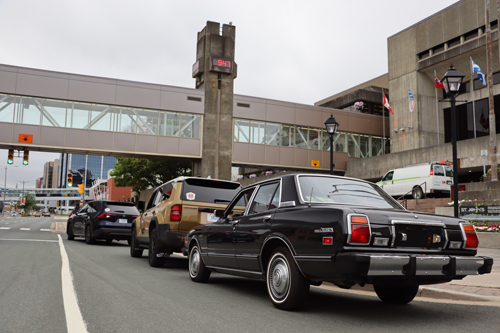
While we would be experiencing a number of cars during our drive, it seemed fitting to get a taste of the early days and so we found ourselves at the wheel of a 1979 Toyota Cressida, generously lent to us by the good folks at Toyota Plaza, part of The Western Group of car dealers that dot Newfoundland.
While it’s no longer with us, 1979 would not be the last year we’d see the Cressida; it would soldier on for another decade, eventually ending its tenure in 1992.
It must have been quite the thing in ’79, though. It looks properly upscale, especially finished in black with thin white-walled tires and splashed of chrome ‘round the taillights, on the bumper and the grille up front. Inside, the reds plush velour seating is pretty much exactly like you’d picture an interior from the era. It may be retro, but it is classy and oh-so-comfortable to sit in.
The ride echoes the seat comfort; yes, it is much more loping than anything you’d find today but the springs and dampers are perfectly tuned so as to insulate occupants. You may only have about 110 horsepower from the six-cylinder engine up front, but it carries you along in such a way that once you grab the skinny wooden wheel and glance at the deeply-recessed but sharp gauges it doesn’t really matter, does it?
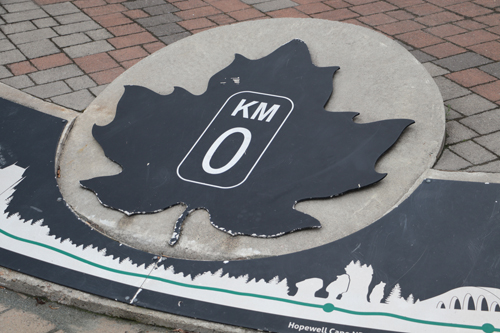
Especially considering that the first leg of our journey had us starting at the KM 0 mile marker in St. John’s and making our way to both Signal Hill and Cape Spear, two noteworthy spots well worth the drive in any car.
Visiting Signal Hill is like walking through a time capsule; it was here that one of the final battles of the Seven Years’ War in North America was fought, after which St. John’s was surrendered by the French to Great Britian (there are re-enactments performed to this day); it was a manned outpost during the Napoleonic Wars and the American Civil War and it was the site of the first transatlantic wireless radio transmission. Come World War II, the allies held a gun battery there for a short time – and no, we’re not talking about the cannons that are on display there to this day. We’re talking heavy artillery railway guns. That’s quite a lot of history – and firepower – for this otherwise quaint little corner of our vast country.
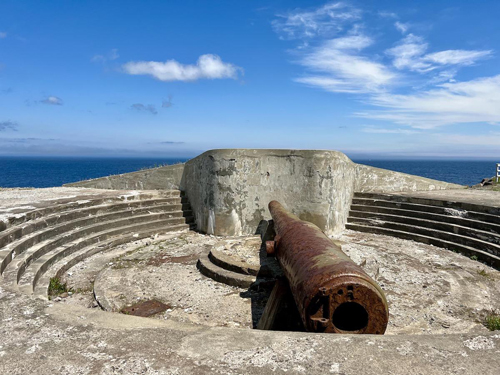
From there, we hopped back into the Cressida and made our way to Cape Spear, the easternmost point of Canada. There’s just something so ethereal about heading up to the famous lighthouse on the cape and knowing that you really can go no farther in our fair country. It’s also fun to imagine what a look out over the horizon here leads to; Greenland? Europe? Russia? Mars? It’s hard to know, but when you’re at a spot like this, the beauty and grandeur tends to reduce any logic you may possess to the far corners of the mind, just for a minute. The continued existence of 10-inch M1888 guns circa 1941 on the site does bring one back from reverie to reality, however, as we’re reminded that no one in any corner of the earth felt fully safe during World War II.
From big guns to big drives
As much as we hated to leave behind the multi-coloured row houses of St. John’s, we were part of a cross-country drive so we had to get cross-countrying.
Which brings us to the next leg of our journey: a 940 km jaunt from St. John’s along the Trans-Canada highway towards Port-Aux-Basques on Newfoundland’s west coast. That means we’d have crossed the entirety of the island by the time it was all said and done.
We wouldn’t be going quite that far today, though, stopping instead at Deer Lake, about 675 km from Saint John’s through hills, lush farmland and more reivers and lakes than any one person this site of a cartographer could count. It seems like there’s a never ending supply of freshwater here, to the point where they’ve just given up on calling them actual names, instead referring to them as “Number Four Pond West” or “Slough Number 2”, which just seems so perfect for the situation.

For this portion of the drive, we were in one of the newest Toyota models and one that is tailor-made for road trips like this. You’ve heard of the Crown sedan before, but this was the Crown Signia, a neat mix of crossover and station wagon with a hybrid powertrain capable of averaging 6.0L/100 km on the highway without breaking a sweat.
The occupants won’t be sweating much, either; the Signia’s cabin is a properly comfortable space with seats cushy enough to almost – almost – recall that wonderful old velour-seated Cressida. The Signia’s items aren’t quite that squishy but what they lack in the squish, they make up for with support. I know that when I arrived at the quarter mark of our journey – the charming Bare Mountain Coffee House in Clareville, NL I didn’t’ feel nearly as fatigued as I thought I would. Sure; some of that was thanks to the wonderful semi-sweet iced tea I was enjoying alongside a scrumptious grilled cheese with bacon, but most of it had to do with the Signia’s well-appointed interior as well as its wonderfully controlled ride that suggest something befitting of Toyota’s Lexus luxury arm.
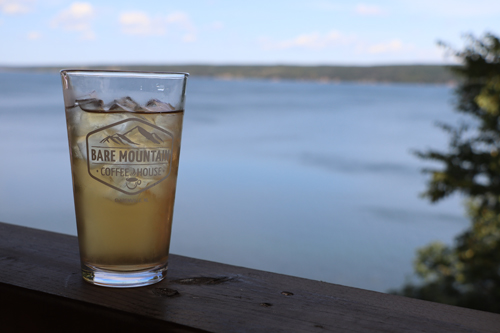
Indeed, the Signia isn’t here just for kicks, either; its job is to pick up the slack left by the recently departed Venza, a much more crossover-like thing that lasted only about three years. I’m sure Toyota hopes the Signia will do better than that and with digs like this (not to mention the power, which comes in at 240 hp), I’m confident that it will…save for one shortcoming revolving around a much more important bit in today’s car world than it ever was in the Cressida’s heyday.
That bit? The infotainment system. Now, what the Signia has is a huge step of what Toyotas of old had (and even some current Toyotas – hello, 4Runner); that is to say an improvement on the dull fonts and muddy graphics of old. Still, though; we encountered one or two wireless CarPlay drops, a laggy navi system and a menu structure that could be more intuitive. I do like the digital rear-view mirror, though, which makes for a wider, unobstructed view than a traditional mirror that has to deal with small rear window openings and back seat foreheads.
By land, sea and…land
While the Signia hasn’t been around for long, our car for the start of the day stretch from Deer Lake to Port-Aux-Basques has been: the Toyota Corolla.
Yes, we’re making a turn to Toyota’s North American roots, here, but this Corolla is far removed from what was rolling off the line in ‘69. For one, it’s got all-wheel-drive and while that may not necessarily be the driving enthusiast’s choice, it sure does make sense in Canada.

Now, you may find it funny that I mention driving enthusiasts in the same beath as Corolla but know this: the mid-‘80s version of the Corolla – known as the “Trueno” – was a wonderfully affordable way to have some fun at the wheel. It had rear-wheel-drive, and was infinitely tuneable for drifting, hillclimbing (or “touge”, if you want to really get into the weeds of Japanese car culture) and even circuit racing.
Now, this latest Corolla may not have RWD but it has a healthy accelerative punch with 134 hp on tap and will cruise at 120 km/h with nary a complaint. Yes; it will start to wheeze one you get past that, but it’s a surprisingly quick drive from this for-the-masses compact.
Plus, it continues to deliver everything that Corolla owners – all 25 or so million of them – have always loved: a great ride and stability at speed. It feels like there’s very little that can unseat this little sedan, from crosswinds to quick transitions through turns and so on. You can even feel a little bit of the road through the wheel, which is something I find myself bemoaning the lack of even in more high-performance cars than this. It’s comfortable, too; not as well-trimmed as the Signia, perhaps, but the seats feature nice, wide cushions and all your infotainment necessities are present and accounted for.
Either way, it’s a great choice for an early-morning cruise to the ends of Newfoundland at Port aux Basques along the Trans Canda – or TCH, as the signs along the way constantly reminded us. At about 7 AM, the road is pretty much deserted, allowing is to take in the great vistas and endless lakes and rivers that dot the landscape here. It’s a very ethereal, pastoral and even relaxing, this drive, and while I’m sure just like any cross-province highway it gets gummed up at the typical times, it isn’t right now.

In fact the only traffic we saw was as we arrived in Port aux Basques and its ferry terminal, where we’d be setting off to Sydney. So named for the Basque fishermen that used it as a port of call, this town of approximately 3,500 was partially evacuated at the hands of Hurricane Fiona, which made landfall here almost exactly two years ago. Even with all that, the town remains an essential jumping off point to Nova Scotia.
The ferry ride itself take about six hours, but the boats are well-equipped and even have optional sleeper cabins if you so choose. There’s an additional fee to get them, but for overnight rides, they are a big help. Otherwise, there’s a full-service restaurant, café, bar and various classes with various amenities. It’s not a cruise ship, really, but the on-boars service did make the ride feel somewhat less than six hours.
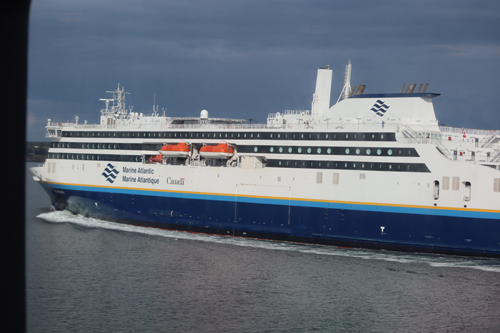
Which is good, because I was very much looking forward to my last two drives of this trip as we convened beside the world’s largest violin (officially called “The Big Fiddle”, it’s crafted from steel and weighs an impressive eight tons): the Land Cruiser SUV and GR 86 Trueno (remember that name?) edition sports car. They were to be my two steed as I rounded the famous Cabot Trail and made my way into Halifax.
We start in the Land Cruiser, which fits the bill for this celebration to a “T”. Along with the Crown Signia, it’s featured on every leg of this journey because it’s tough to discuss the history of Toyota without discussing the Land Cruiser.
It’s been available in all sorts of forms over the years – pickups, jeeps, delivery vans and SUVs – but we haven’t seen one in Canada since the mid ‘90s. Well, it’s back now and arrives with a newfangled hybrid powertrain but with some certifiable old-school touches like optional round headlights, a two-tone roof/body paintjob and in the case of our tester, an all-new brown hue called “Trail Dust”. As you do.
Under the hood, we find a turbocharged four-cylinder hybrid motor good for 326 hp and 465 lb-ft of torque, which provides some nice pull at an array of revs and the capability to tow up to 6,000 pounds.
We didn’t do any towing, but we did get a chance to challenge this body-on-frame truck by weaving through the bends and berms of the Cabot. I won’t lie; you can feel the underpinnings as soon as you set off and there is going to be body roll through the bends.

That’s to be expected but apart from that, what you get with the Landie is a committed, stable ride that you know will carry you through most any adverse conditions you can throw its way. This is a truck whose ancestors did duty in the deserts and jungles the world over, and you can feel plenty of that DNA even as you power by the blown glass shops, the “Sew Inclined” weaving shop and shops featuring all the pewter crafts you can imagine. This is the Cabot, to a T, and the fog 3,500 feet above sea level past Ingonish at Cape North quickly became the perfect backdrop for a Land Cruiser adventure.
Of course, fog means cloud and on an island like this and at elevations like these, the weather can change in an instant at so it goes that as we took the wheel in the GR 86, the heavens opened up, drenching us in rain that may as well have been lifted from the set of a film noir.
Luckily, the 86 is one planted machine that makes a decent amount of power – 228 hp and 184 lb-ft – but not so much that it needs ultra wide tires to handle it at. Tires that, in standing water conditions like this, tend to act more like surfboards than grippy tires. So we were able to keep things on the straight and narrow with gentle inputs until – huzzah! – the ecosystem changed yet again and the roads were dry, the sky blue.

This is the 86’s element. Long sweepers mixed in with great left-right-left transitions are turned into the stuff of dreams with this car, hones so well from its steering, to its suspension tuning and powertrain equipped with a six-speed manual gearbox and short shifter. As much fun as it is to saw the 86’s perfectly sized wheel – small enough so you have room for your thighs, but big enough you can clearly see the gauges between the rim and hub – the clutch and gearlever are the juiciest bits. For the longest time, the Mazda MX-5 was the affordable rear-wheel-drive coupe for me; this latest edition of Toyota’s entry has made me seriously reconsider that choice.
Speaking of the Toyota lore we’ve explored throughout this journey: this particular 86 fits that bill, too. Being the Trueno edition, its gets a black hood, special side stripes, badging and wheels. It’s a shout out to those ‘80s Corollas we talked about earlier, and a great way to show that as far as Toyota has come here, it’s always managed to stick by its roots, right down to the building of its most popular models right here on our home turf.
You gotta love that.



